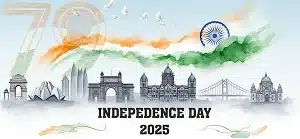If you are thinking about how to apply for the IAS exam, you’re at the right place. The first step towards your dreamed entrance into the IAS begins with one essential action, the application. It’s not that easy, but don’t fret too much. I am here to make it simple for you.
The UPSC CSE 2025 cycle is finished. This article will explain the step-by-step procedure to apply for the UPSC Civil Services Examination (CSE) 2026. I will also tell you about the next important dates, eligibility criteria, and more.
Let’s start reading!
Eligibility Criteria for IAS Exam
The eligibility criteria for the UPSC 2026 are laid out in the official UPSC CSE 2026 Notification. Here they are:
1. Age Limit and Relaxation
There is a difference in the age relaxation and limit for each candidate in a different category. Below is a simple table with the minimum and maximum age limits:
| Category | Minimum Age | Maximum Age (Unrelaxed) | Age Relaxation | Maximum Permissible Age |
|---|---|---|---|---|
| General/EWS | 21 years | 32 years | None | 32 years |
| OBC | 21 years | 32 years | 3 years | 35 years |
| SC/ST | 21 years | 32 years | 5 years | 37 years |
| Persons with Benchmark Disability (PwBD) | 21 years | 32 years | 10 years | 42 years |
If you belong to a reserved category (like OBC, SC/ST, or PwBD), ensure that it is selected appropriately at the time of registration. This will allow you to make the most of the age relaxations.
2. Educational Qualification
The minimum educational qualification required is a Bachelor’s Degree from a Central, State, or Deemed University recognized by the Government of India.
If you are in the final year or waiting for the result of your final degree examination, you can also apply to take the Preliminary Examination.
3. Number of Attempts
Taking Prelims counts as an attempt, and similarly to the age limit criterion, the number of attempts varies for all categories.
| Category | Maximum Number of Attempts |
|---|---|
| General/EWS | 6 Attempts (until age 32) |
| OBC | 9 Attempts (until age 35) |
| SC/ST | Unlimited Attempts (until age 37) |
| PwBD (General/OBC/EWS) | 9 Attempts (until age 42) |
| PwBD (SC/ST) | Unlimited Attempts (until age 42) |
Understanding these attempt limits is important because it tells you how many chances you get!
Important Dates for IAS Application 2026
All the important dates for the IAS application 2026 have been released in the UPSC Annual Calendar for the CSE 2026 cycle. Here they are:
| Event | Date |
|---|---|
| UPSC Notification Release | January 14, 2026 |
| Application Process Starts | January 14, 2026 |
| Last Date to Fill Application Form | February 03, 2026 |
| UPSC Civil Services Prelims Exam | May 24, 2026 |
| UPSC Mains Exam Date | August 21, 2026 (Starts) |
Remember to set multiple reminders for these dates. Since the number of applicants is massive, UPSC does not generally make exceptions for late submissions.
Step-by-Step IAS Exam Application Process
Up until 2025 applications, UPSC used to follow a “One Time Registration” system, which has been removed now, as per their notification on 25th May 2025.

They have now introduced a new system, which is divided into four parts: Account Creation, Universal Registration, Common Application Form, and Examination.
The first three contain information which are common to all examinations . The fourth part contains examination notices, Examination Application, and application status.
Here are the detailed steps on how to apply for the IAS examination:
1. Account Creation
All candidates are required to create an account on the UPSC website before they can fill out the examination form.
Step 1: Visit the official UPSC online application website to create an account. For the first step, you’ll be required to provide your email ID and phone number. After that, you’ll need to verify your account using the OTPs sent to your email/mobile.
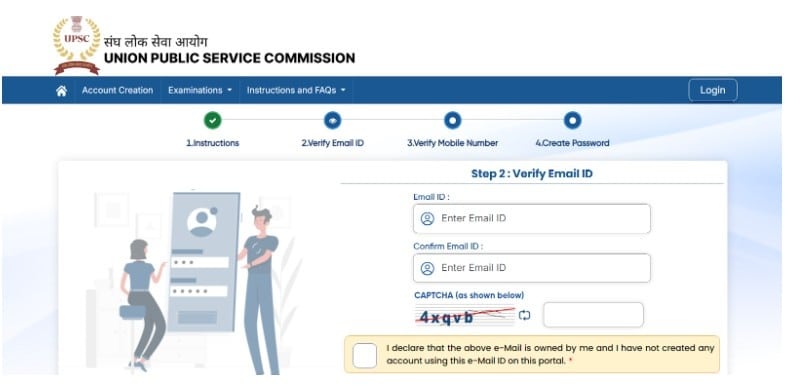
Step 2: Once your account has been created, log in using either your registered mobile or email ID.
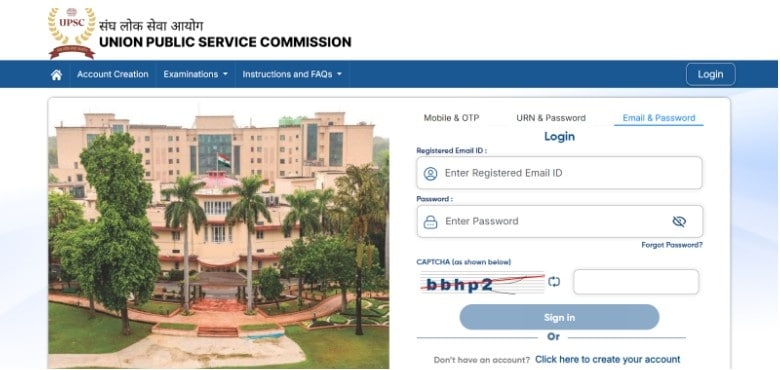
For this step, you can ignore the “URN & Password” option since your Universal Registration has not been done yet.
2. Complete Universal Registration
Step 3: Find the Universal Registration option on the page after you log in and click on it.

Step 4: You’ll find detailed instructions on how to go about this part of the process. Scroll down and click on “Proceed for Universal Registration” to go ahead.

Step 5: You’ll land on the “Identity Profile” page. Fill all the sections with accurate information and don’t forget to double-check.
On the left side of the page, you can see a list of the various information you’ll need to provide under Universal Registration. These include your Identity Profile, Matriculation Board Profile, and Aadhaar / Photo ID.

Step 6: Once you have filled all the areas, click on “Next & Review” to proceed.
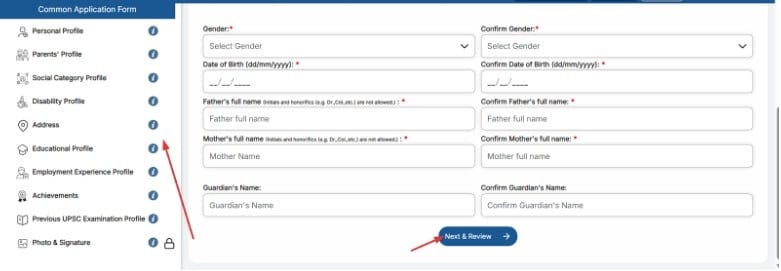
Step 7: Review the information you’ve filled out and click on “Submit.”
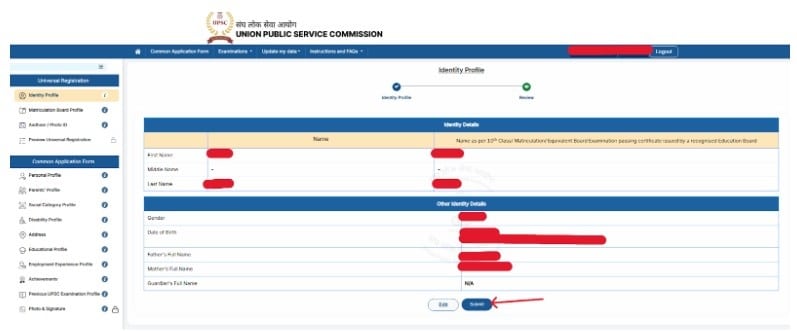
Step 8: In the same way, fill the other two parts, which are the Matriculation Board Profile and Aadhaar / Photo ID.
3. Common Application Form
Step 9: You can now access the common application form of the portal. You will need to provide the information that is common to all UPSC examinations.
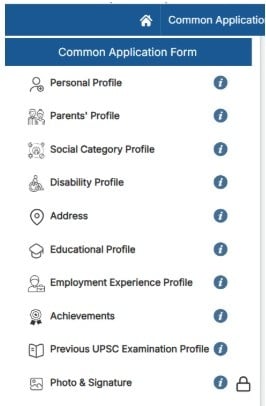
Filling the Common Application Form well before your target examination allows you to save time and avoid the last-minute rush.
4. Examination
Step 10: The final step is the Examination. You can find the options for checking new notices, applying to exams, and reviewing your applications on the front page.
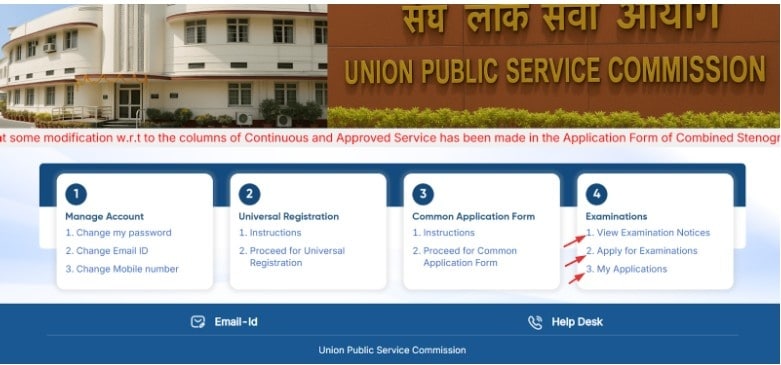
Remember to fill your Common Application Form well before your examination notice for peace of mind.
How to Download the IAS Admit Card
The e-admit card is released on the official UPSC portal about 10 days prior to the examination (mid-May 2026). It is compulsory for all stages of the examination and can only be downloaded from the UPSC website.
Since it’s a new portal, we understand that aspirants may be feeling confused. Don’t forget to check our page for the detailed updates!
Common Mistakes to Avoid While Applying
Here are some common pitfalls that you need to be aware of and avoid:
- Not doing a fresh registration: Old OTR data is obsolete, and UPSC now follows a new application system.
- Missing deadlines: This will lead to automatic rejection with no going back.
- Filling incorrect details in the form: While UPSC does offer a brief correction window, it’s still important to double or triple check everything.
- Improper photo/signature upload: The new system asks you to completely re-upload all documents. If you do not upload a proper document, you will be rejected.
Preparing for UPSC is challenging enough as it is. Don’t stress yourself even more by making these errors!
Tips for a Successful IAS Application
Now that you know how to apply for your dream exam, here are some tips for a successful application:
- Double-check all details using the “Preview” option before final submission.
- Save a soft copy of the final application and print the confirmation page.
- Stay updated on circulars and notices using the UPSC website.
- Prepare all required scanned documents before the application process.
When you’re fully prepared for the application process, you can devote all your energy into mastering the syllabus.
Conclusion: Apply for the IAS Exam in A Few Simple Steps
The IAS Exam 2026 application process has many stages, a new registration system, and strict timelines. This all may appear scary at first. But remember, all the IAS officers you have looked up to were once standing in your same shoes.
The things that will help you the most are accuracy and awareness. Prioritize understanding the eligibility requirements, stay on top of the dates, and follow each step of the new UPSC registration system closely.
Now that you know exactly how to apply for the IAS Exam 2026, don’t stop here. Get your documents in order, put important dates on your calendar, and take that first step towards your dream job in the Indian Administrative Service.
FAQs
The UPSC will allow a limited period of Correction Window (around February 04-10, 2026) to make selected changes.
You will need to upload the scanned copies of your Photograph, Signature, and Photo ID Proof (Aadhaar, PAN, etc.) as part of your online application, along with educational documentation and evidence of graduation.
A female candidate, along with SC, ST, and PwBD applicants, is exempt from the application fee (₹100) in its entirety.
You can apply for the Prelims exam provisionally. You must, however, produce proof of passing your degree examination before the Mains exam.
You’ll get the option to choose the examination center when filling out the form. Centres are allotted on a “first-apply, first-allot” basis. Therefore, applying early is recommended.

